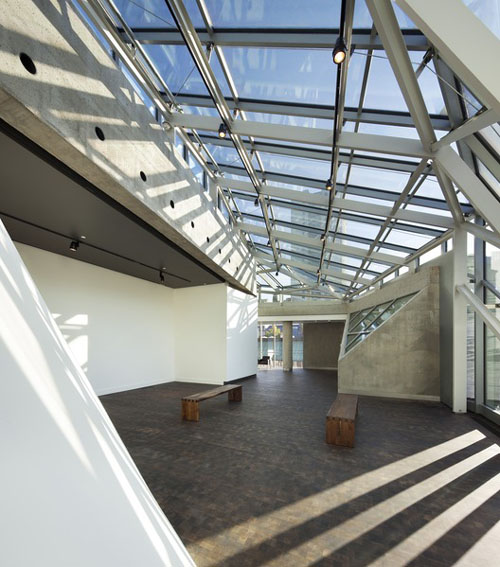Rejoice in music: Concert hall in a Church, Montreal, Canada.
When the Erskine and American Church in Montreal fell out of religious use, the preservation of its historic fabric became an important question for the city. It was built in the late 19th century at a time when Montreal apparently contained 70% of the nation’s wealth. This spending power was reflected in the grand architectural style of the church, its limestone and Miramichi sandstone construction, and features like the 20 Tiffany stained-glass windows, the largest collection of its kind in Canada.
The conservation problem was solved by careful restoration of the historical fabric, whilst the more difficult question of what to use the building for, was solved by its transformation into a 444 seat a concert hall with a new extension housing a contemporary art gallery. Designed by Provencher Roy + Associés Architectes, the resulting scheme has won several awards. In some ways, the key to the scheme was the demolition of an old annex to the church and the construction of the bright, new, Claire and Marc Bourgie Pavilion of Quebec and Canadian Art at the Montreal Museum of Fine Arts. It might not have a snappy name, but it has become a facility with popular appeal. It also provides support services such as box office, washrooms and cloakrooms to the church / concert hall reducing the architectural impact of its conversion. Nearby, and part of the same institution, are two other arts pavilions. The Jean-Noël Desmarais and the Michal and Renata Hornstein Pavilion which are connected via a network of underground passages. A passageway from the new pavilion now taps into this network creating a gallery in its own right. The passageway is 45m in length and has sufficient space to feature monumental works of art. There is also a metaphorical connection to the other pavilions in the form of the white marble cladding that was cut from the same Vermont quarry.



















